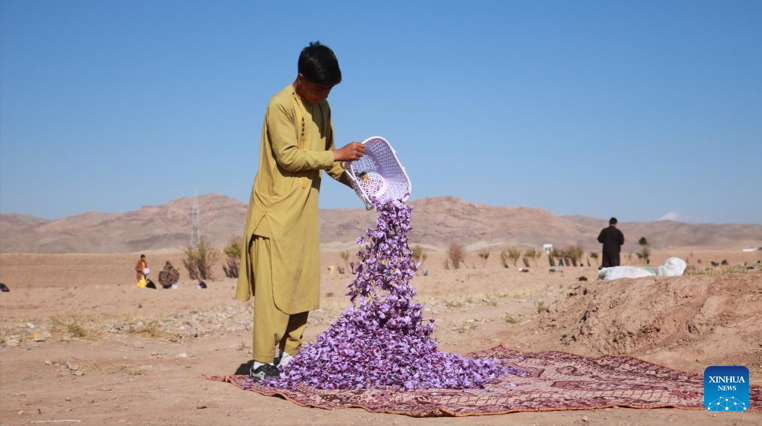HERAT, Afghanistan, Nov 22 (NNN-ANA) – On a dusty saffron farm in Afghanistan’s western Herat province, Nafisa, a 55-year-old woman, carefully gathers saffron flowers. For her, this seasonal work provides a vital lifeline.
“I earn between 150 and 180 afghanis (2.20 and 2.64 U.S. dollars) daily, from working on the saffron farm. It helps me cover my basic needs and sustain my daily life,” she said.
“I have no other way to earn a living. I wait for the saffron harvest season every year to collect these flowers,” she said.
Saffron cultivation, a promising alternative to Afghanistan’s infamous poppy farming, has been steadily expanding in the country, over the past two decades. More farmers are turning to this precious crop, drawn by its profitability.
Currently, around 9,000 hectares of land are dedicated to saffron cultivation, with approximately 95 percent concentrated in Herat province, according to Abdul Shakor Ehrari, chairman of Tulai Surkh Afghan (Afghan Red Gold), a leading saffron processing company.
According to the official, Saffron cultivation in Afghanistan, especially in the Herat province, continues to grow, as farmers aim to harvest more and earn better income.
“Based on the reports we have received from partner bodies, some 8,000 to 9,000 hectares of land have been cultivating saffron in Afghanistan with 85 to 95 percent of them in Herat,” Ehrari said, in his saffron farms, recently.
According to Ehrari, the saffron harvest season provides employment for between 500,000 and one million workers across the country. He predicts a significant increase in this year’s yield, estimating a harvest of up to 40 tonnes of saffron, compared to last year’s 35 tonnes.
However, Afghanistan’s saffron industry faces challenges due to international sanctions. “Sanctions have caused major problems, particularly in transferring money. This has cost us many of our customers,” Ehrari said, lamenting the obstacles undermining saffron exports.
The U.S.-imposed sanctions on Afghanistan have heavily impacted Afghanistan’s fragile economy, especially the banking system, which has undermined trade, transactions and other economic activities in the nation.
For workers like 39-year-old Hatam, the harvest season offers a source of stability. “I collect about 12 kg of saffron flowers each day. Life goes on. I work here and am satisfied with the outcome of my efforts,” Hatam said.
Despite the hardships, the growing saffron cultivation continues to offer hope and opportunities in Afghanistan, contributing to both individual livelihoods and the national economy.– NNN-ANA





